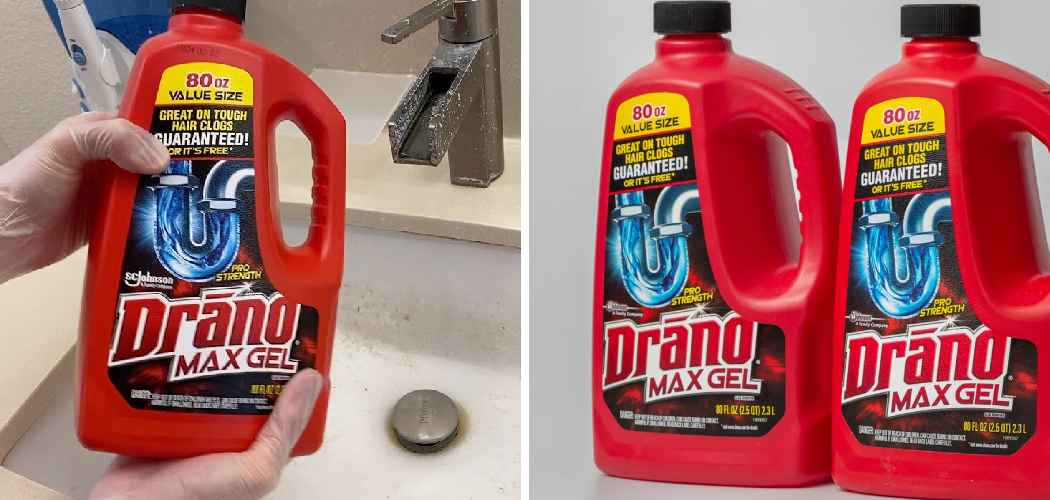Are you facing a clogged toilet and don’t know what to do? Don’t panic, as you can easily fix it with Drano.
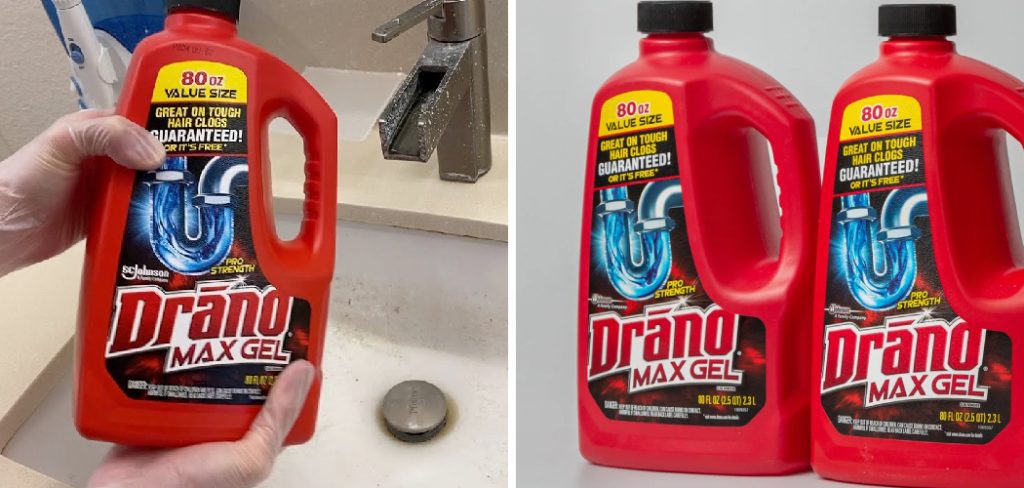
Toilets are essential to our daily lives, and a clogged toilet can be a major inconvenience. Drano is one of the most effective drain cleaners that can easily unclog your toilet without any hassle. Follow these simple steps to learn how to use Drano in the toilet.
Clogged toilets can be frustrating and inconvenient. Fortunately, Drano offers a solution designed to tackle tough blockages and restore water flow. Using Drano in the toilet might seem straightforward, but it’s important to follow some specific steps to ensure safety and effectiveness.
This guide will walk you through the proper method to use Drano in your toilet, helping you swiftly and safely eliminate clogs.
Is Drano Safe for Toilets?
First things first, it’s important to know if Drano is safe for your toilet. The answer is yes – when used correctly, Drano can be a safe and effective solution for unclogging toilets. However, there are some precautions you should take before using it.
- Always follow the instructions on the label carefully.
- Use only the recommended amount of product.
- Do not mix Drano with any other cleaning products.
- Keep children and pets away from the toilet during the process.
By following these precautions, you can ensure that using Drano in your toilet will be a safe and effective solution for unclogging it.
What are the Benefits of Using Drano in the Toilet?
Before we dive into the steps, let’s first understand why you should use Drano over other methods. Here are some benefits of using Drano in the toilet:
- Effectiveness: As mentioned earlier, Drano is highly effective in clearing tough clogs and restoring proper flow to your toilet.
- Saves Time and Effort: With just a few simple steps, you can quickly unclog your toilet without having to use a plunger or snake.
- Cost-effective: Drano is affordable compared to calling a plumber or using other drain cleaning tools.
- Easy to Use: You don’t need any special skills or technical knowledge to use Drano in the toilet.

Now that we know why Drano is a great solution for clogged toilets let’s move on to the steps for using it.
What Will You Need?
Before you start using Drano, make sure you have the following items on hand:
- Drano: You can find this product at most hardware stores or supermarkets.
- Rubber Gloves: Rubber gloves protect your hands from coming into direct contact with the chemicals in Drano.
- Protective Eyewear: It’s important to wear protective eyewear to prevent any splashing of the product into your eyes.
- Bucket: This will come in handy for collecting water and cleaning up any spills.
Now that you have everything you need let’s get started.
10 Easy Steps on How to Use Drano in the Toilet
Step 1. Wearing Protective Gear:
Before you begin, it’s crucial to prioritize your safety. Start by wearing rubber gloves and protective eyewear. Drano contains strong chemicals that can cause irritation or injury upon contact with skin and eyes. Wearing protective gear minimizes the risk of exposure to these potentially harmful substances.
Step 2. Remove Excess Water:
To ensure Drano works efficiently, you need a relatively dry environment for it to interact with the clog. Start by using a bucket to remove any excess water from the toilet bowl. You can use a plastic cup or a small container to scoop out the water and transfer it into the bucket.
Be careful not to spill any water on the floor, and if you do, wipe it up immediately to avoid any slipping hazards. Removing as much excess water as possible helps to concentrate the product on the clog itself, making it more effective.
Step 3. Pour Drano Into the Toilet:
Once you’ve removed the excess water, it’s time to pour Drano into the toilet. Carefully read the instructions on the Drano bottle to determine the correct amount to use. Typically, you’ll need to pour a measured amount directly into the toilet bowl.
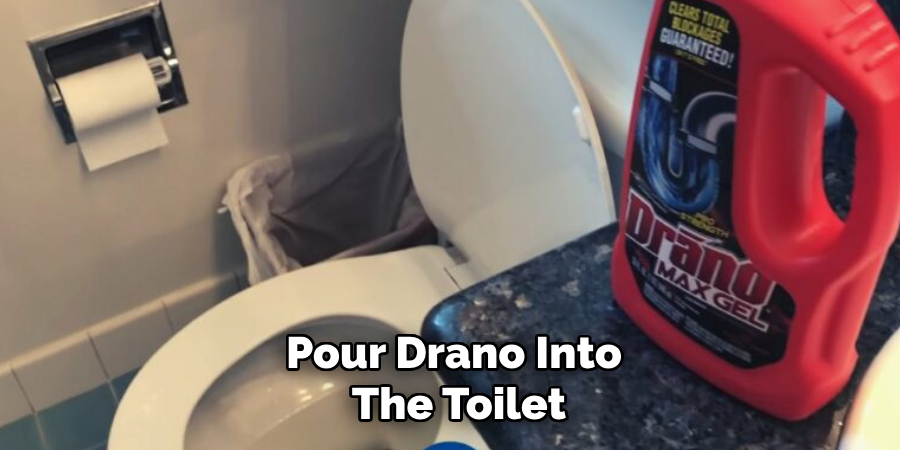
Hold the bottle close to the water surface to prevent splashing. Pour steadily and avoid any backsplash. It’s crucial to ensure that the product goes straight into the bowl to target the clog effectively.
Step 4. Allow Drano to Sit:
After pouring Drano into the toilet, giving it time to work on breaking down the clog is essential. As specified by the instructions on the Drano bottle, allow the product to sit in the toilet bowl for at least 15 to 30 minutes.
During this time, avoid using the toilet or flushing it. The chemicals in Drano need adequate time to dissolve the blockage effectively. Patience is key, as rushing this step might result in an incomplete clog clearing.
Step 5. Check Progress:
After waiting for the recommended time, checking if the clog has been successfully dissolved is essential. Carefully inspect the toilet bowl to see if the water is draining away. If it is, this indicates that Drano has effectively broken down the blockage.
However, if the water remains stagnant, it may be necessary to repeat the process or consider other unclogging methods. At this stage, refrain from flushing the toilet abruptly, as it could cause overflowing if the clog is still present.
Step 6. Flush the Toilet:
If the water has drained, the next step is to flush the toilet to see if the clog has been completely cleared. Put back the excess water you removed only if necessary.
Be observant during the flush to ensure that the water flows smoothly and swiftly down the drain, indicating that the clog is gone. If the first flush seems successful, try flushing again to confirm that the blockage has been fully eliminated.
Step 7. Clean Up:
It’s time to clean up once you’ve confirmed that the clog is gone. Dispose of any used protective gear, such as gloves, responsibly. Wipe down any surfaces that might have come into contact with Drano to ensure no residue remains.
This helps to prevent any accidental exposure or potential damage to bathroom surfaces. Ensure the bathroom is well-ventilated to clear any lingering chemical fumes from the Drano. Congratulations, your toilet should now be functioning normally again!
Step 8. Rinse the Bowl:
After successfully clearing the clog and ensuring proper water flow, it’s essential to rinse the toilet bowl thoroughly to remove any remaining Drano residues. Fill a bucket with warm water and carefully pour it into the toilet bowl, ensuring an even distribution.
This helps in diluting and flushing away any lingering chemicals, which can be harmful if left untouched. Repeat this process a few times to ensure the bowl is thoroughly rinsed. This step is crucial to maintain a clean and safe toilet environment, free from chemical residues that could cause corrosion or damage over time.
Step 9. Refill the Toilet Tank:
Once the clog is cleared and the bowl has been thoroughly rinsed, it’s time to refill the toilet tank and return it to its normal working condition. Locate the water valve behind your toilet and turn it counterclockwise to open it.

This will start the flow of water into the toilet tank. It may take a few minutes for the tank to fill up completely, so be patient. Keep an eye on the tank’s water level to ensure it reaches the correct height without overfilling. The fill line inside the tank is usually marked to guide you.
During this process, make sure there are no leaks around the base of the toilet or from any of the connecting pipes.
If you notice any leaks, turn off the water valve immediately and inspect the connections to identify the problem. Tightening loose connections or replacing damaged parts might be necessary to prevent future issues.
Once the tank is filled, flush the toilet a few times to confirm that it’s working properly. Each flush should be smooth and strong without hesitation or signs of lingering clogs.
Observing the flush mechanism ensures that both the bowl and tank are fully operational. If everything checks out, then congratulations—you’ve successfully unclogged your toilet and restored it to optimal functionality.
Step 10. Prevent Future Clogs:
To avoid dealing with clogged toilets in the future, it’s important to adopt preventative measures. Be mindful of what you flush; only flush toilet paper and human waste.
Dispose of items like wet wipes, sanitary products, and paper towels in the trash rather than the toilet. Regularly inspect and maintain your toilet’s plumbing system. Using a toilet bowl cleaner once a week can help keep the pipes clear.
Additionally, consider using a drain guard to catch any debris that might accidentally fall into the toilet. Following these preventative steps can reduce the likelihood of future clogs and ensure that your toilet remains in good working order.
By following these ten steps, you can effectively unclog your toilet using Drano and restore it to optimal functionality. Remember to always carefully follow the instructions on the Drano bottle and take any necessary safety precautions during the process.
5 Additional Tips and Tricks
- Read the Label: Before using Drano, always read the label carefully to ensure it is safe to use on your type of toilet. Some products are not suitable for toilets and can cause damage.
- Use a Measured Amount: Only use the amount specified on the packaging. Overusing Drano can damage your plumbing system and may not resolve the clog.
- Wear Protective Gear: Wear gloves and safety goggles to protect your skin and eyes from any potential chemical splashes.
- Ventilate the Area: Ensure the bathroom is well-ventilated when using Drano. Open windows or turn on an exhaust fan to disperse any fumes that might be harmful if inhaled.
- Avoid Mixing with Other Chemicals: Never combine Drano with other cleaning agents or chemicals, which can result in hazardous reactions and release toxic fumes. Always use Drano as a standalone solution for best results.
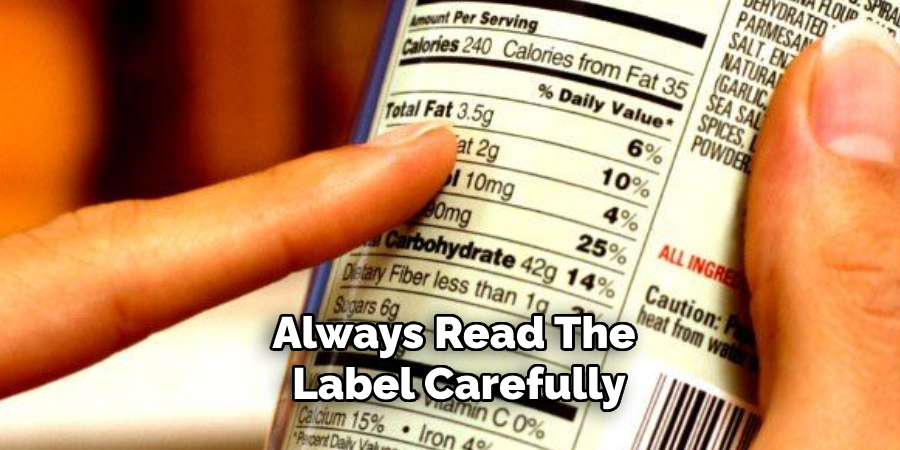
With these tips, you can effectively and safely use Drano to unclog your toilet. Remember, prevention is key to keeping your plumbing system running smoothly.
5 Things You Should Avoid
- Using Drano in Toilets It’s Not Meant For: Not all Drano products are designed for toilet use. Avoid using household Drano drain cleaners intended for sinks or showers. Look for specific formulations meant for toilets.
- Ignoring Manufacturer Instructions: Skipping over the manufacturer’s guidelines can lead to improper use and damage. Always follow the recommended procedures and dosages specified on the label.
- Forgetting to Flush the Toilet First: Using Drano in a toilet that hasn’t been flushed recently can lead to a mix of waste and chemicals, potentially creating hazardous fumes. Always flush and clean the toilet bowl before applying Drano.
- Repeated Applications: If the first application doesn’t clear the clog, it might be tempting to use more Drano. Repeated applications can damage your plumbing and may not solve the problem. Consider calling a professional after a failed attempt.
- Disregarding Personal Safety: Handling chemical cleaners without proper precautions is risky. Always wear protective gear, ensure good ventilation, and never touch the substance directly to avoid chemical burns or inhalation of toxic fumes.
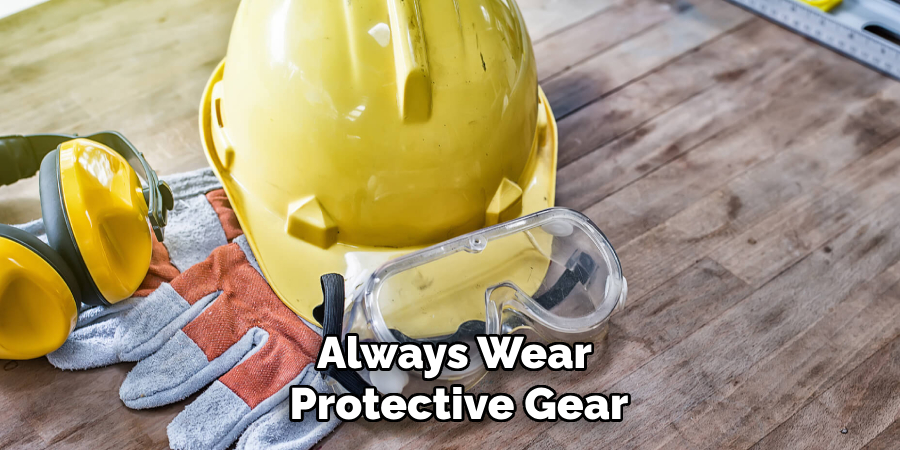
By keeping these points in mind, you’ll ensure that you use Drano safely and effectively, avoiding common pitfalls that can lead to damage or injury.
Do You Have to Flush Drano With Hot Water?
It is recommended to flush Drano with hot water for optimal results. The heat from the water can help activate and dissolve the clog-fighting chemicals in Drano, making it more effective in breaking down the blockage.
However, be cautious when using hot water as it can cause splashes and potentially burn your skin.
It is important to always read and follow the instructions on the label, which may specify a specific temperature range for flushing. If you are unsure, start with warm water and gradually increase the temperature if needed.
Additionally, some Drano products may not require hot water at all, so it is important to read the label carefully before use. In any case, always take proper precautions and avoid contact with the solution when using Drano.
Overall, flushing Drano with hot water can be beneficial, but it is not always necessary and safety should always be the top priority. So, make sure to read the label and follow all instructions for best results and avoid any potential hazards.
What Happens if You Forget to Flush Drano?
Forgetting to flush Drano after application can lead to various potential issues. The most significant concern is that the chemical solution will remain in the toilet bowl, potentially causing damage or harm.
If the chemical remains in contact with the porcelain for an extended period, it may cause discoloration or corrosion. If not properly flushed away, the solution could also mix with other substances in the toilet, creating hazardous fumes.
Moreover, forgetting to flush Drano means that the solution is not fully activated and may not have time to dissolve the clog effectively. This could result in a failed attempt at unclogging the toilet and potentially cause further damage if multiple applications are used.
To ensure safety and effectiveness, always remember to flush Drano with hot water as directed on the label after use.
If you accidentally forget, it is best to flush with warm water and monitor for any potential issues or reactions. In case of any concerns, seek professional assistance. Always prioritize safety and carefully follow all instructions when using Drano. Remember, a little caution can go a long way in avoiding undesirable outcomes.
What to Use Instead of Drano?
If you are looking for an alternative to Drano, there are a few options to consider.
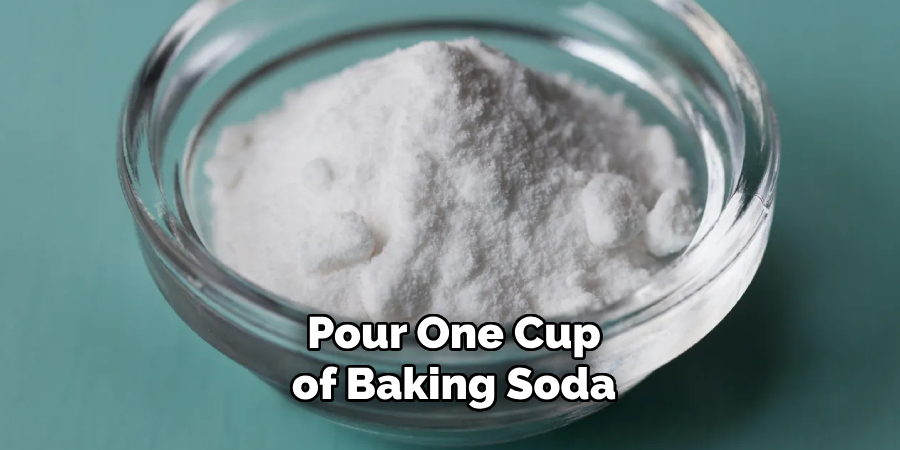
- Baking Soda and Vinegar: This natural solution can be used to unclog a toilet. First, pour one cup of baking soda into the toilet bowl, followed by two cups of vinegar. Let it sit for 30 minutes before flushing with hot water.
- Plunger: A plunger is a simple and effective tool for unclogging toilets. Use the plunger in an up-and-down motion to create suction and dislodge the clog.
- Toilet Auger: This tool is specifically designed for toilet clogs and can reach deep into the pipes to clear stubborn blockages.
- Enzyme-based Cleaners: These cleaners contain natural enzymes that break down organic materials without harsh chemicals. They are safer for the environment and can be effective in clearing clogs.
- Professional Plumbing Services: If all else fails, it is best to seek professional help from a plumber who has the necessary tools and expertise to handle any type of toilet clog safely and effectively.
Remember, prevention is key to avoiding clogged toilets. Regularly using a plunger or enzymatic cleaner can help keep your toilet running smoothly without the need for harsh chemicals. But if you do find yourself with a stubborn clog, consider using one of these alternatives before reaching for Drano.
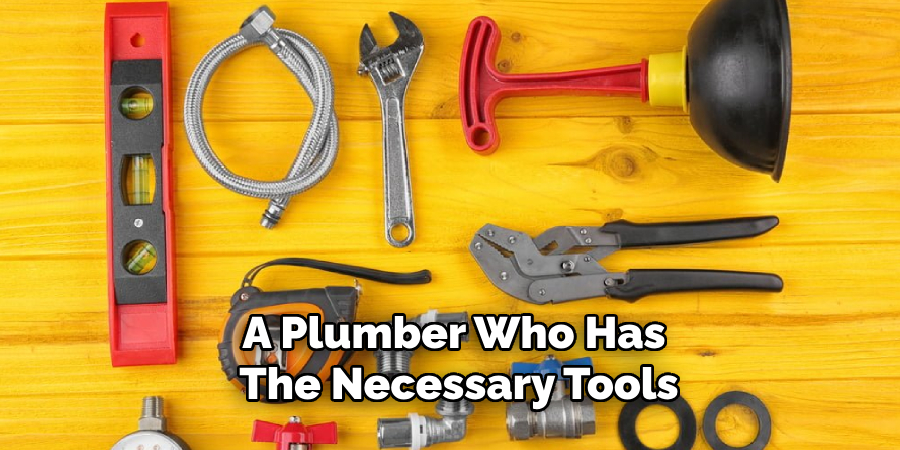
Conclusion
How to use Drano in the toilet should be approached with caution and careful adherence to guidelines. Not all Drano products are safe for toilet use, so it is crucial to select one that is specifically formulated for this purpose. Always follow the manufacturer’s instructions to avoid improper use and potential damage to your plumbing system. Remember to flush the toilet before applying to prevent hazardous chemical reactions and ensure a clean surface for the product.
Avoid multiple applications, as overuse can further harm your plumbing and may necessitate professional intervention.
Protect yourself by wearing appropriate safety gear, ensuring good ventilation, and avoiding direct contact with the chemical. Flushing Drano with hot water can enhance its effectiveness, but always consult the product label for specific directions.
In summary, using Drano in the toilet can be effective if done correctly, but safety should always be your top priority. Always read and follow the instructions, and don’t hesitate to seek professional help if necessary. By taking these precautions, you can address toilet clogs safely and effectively.

